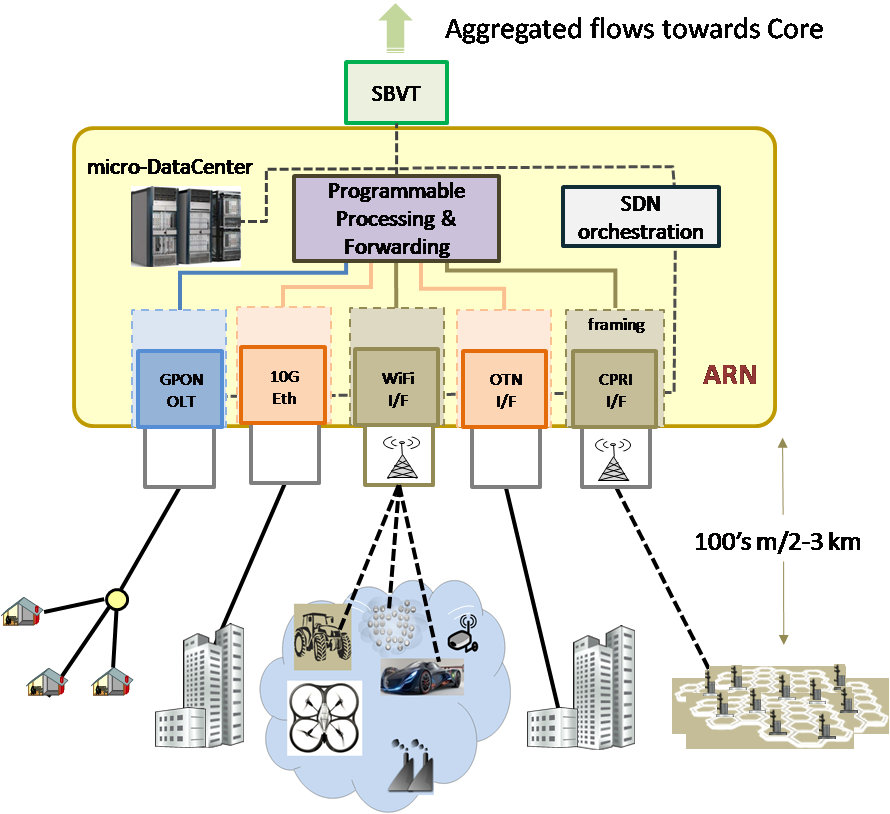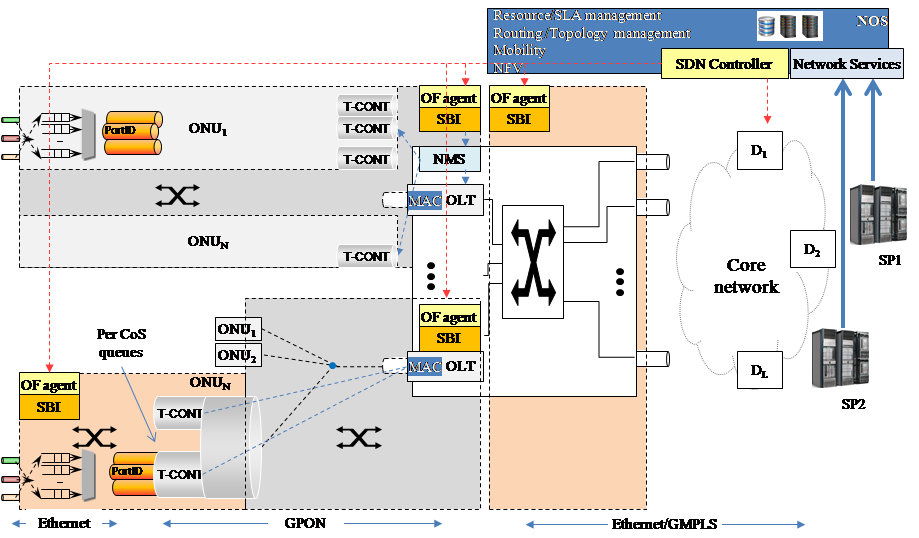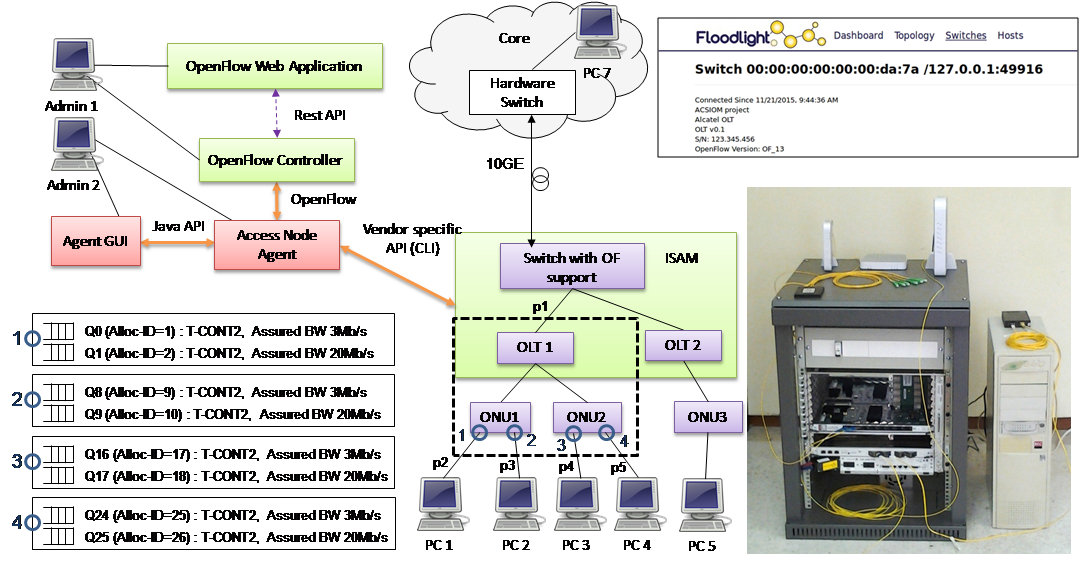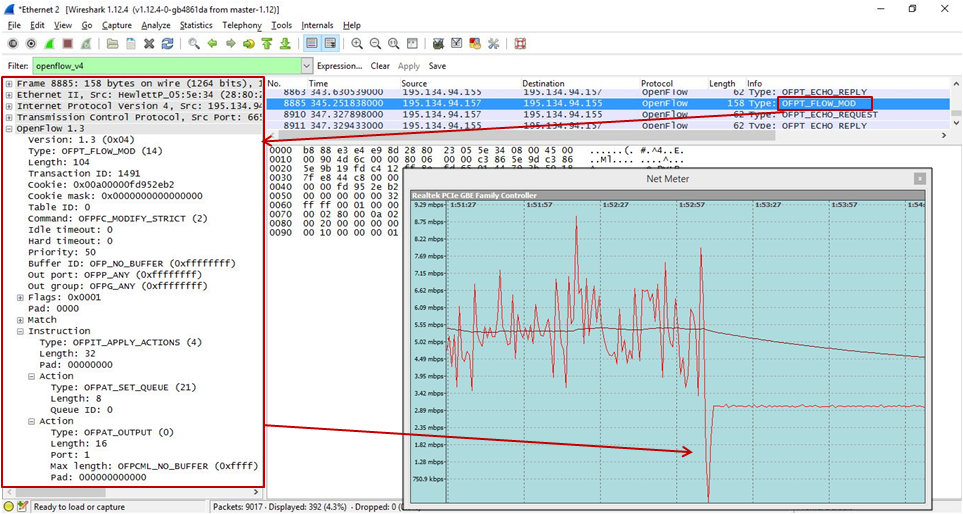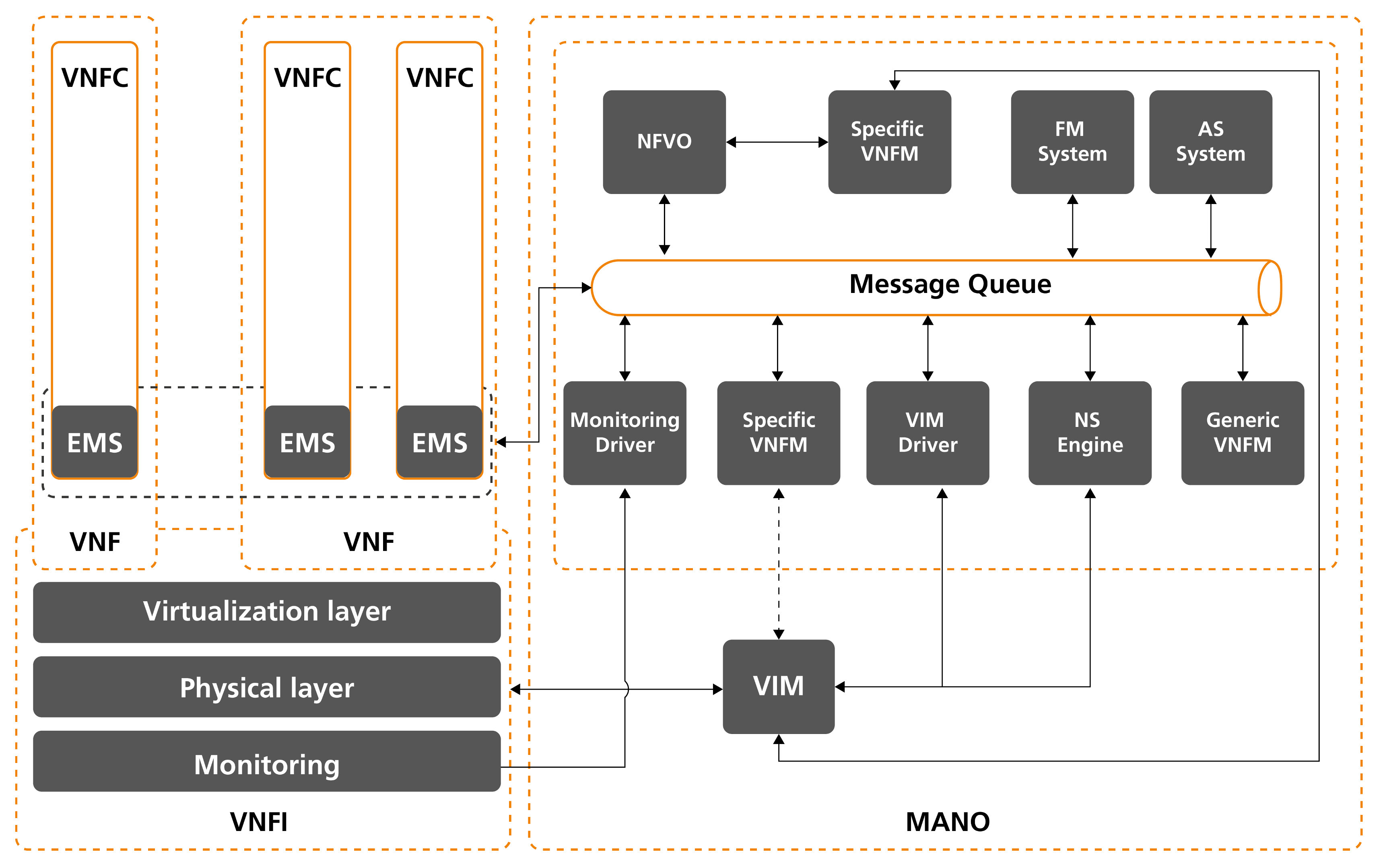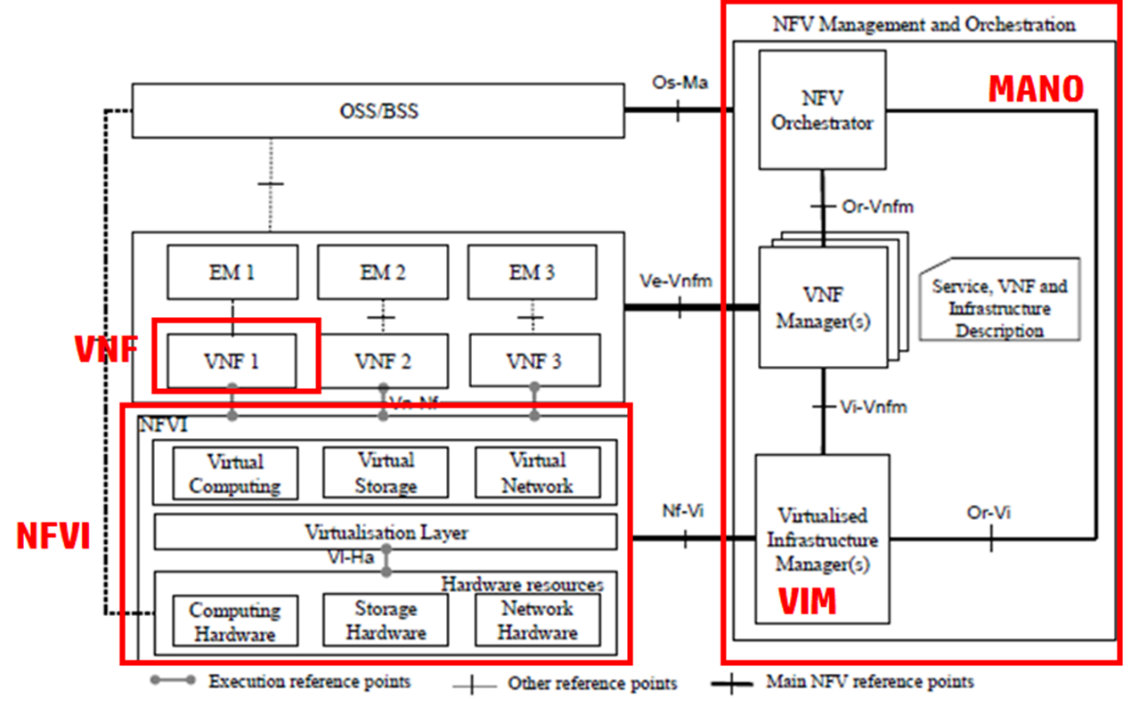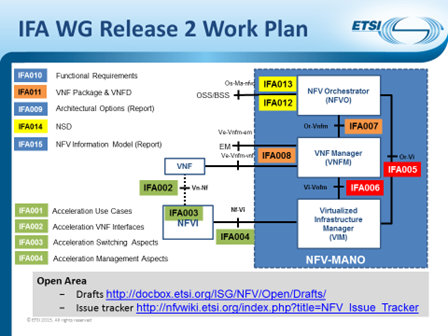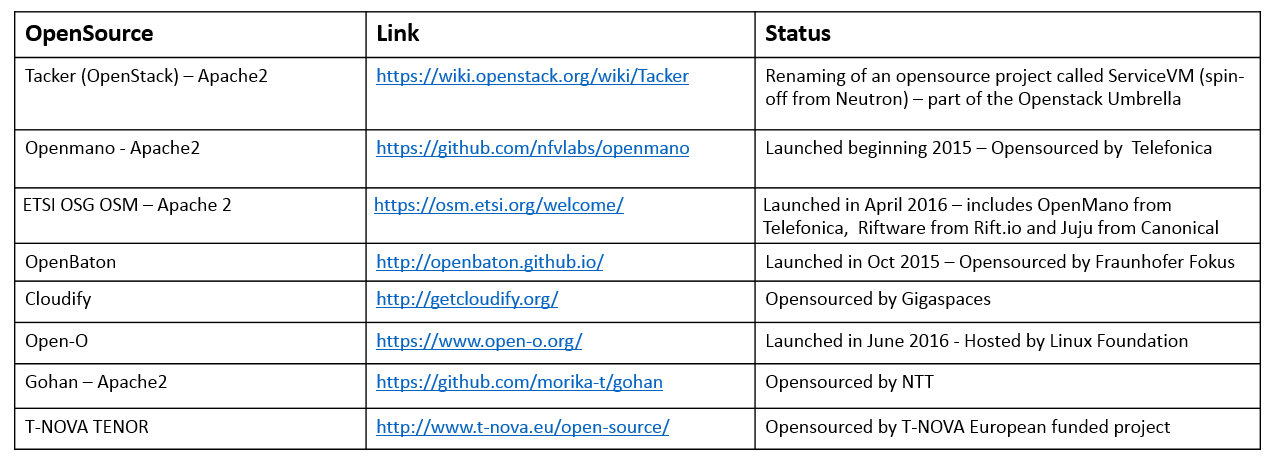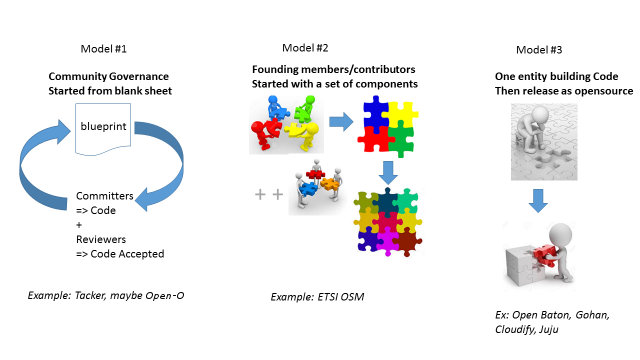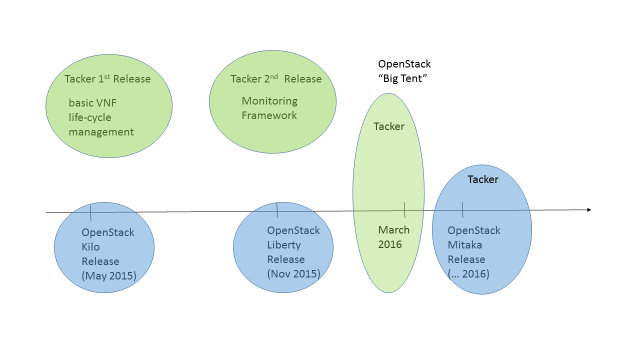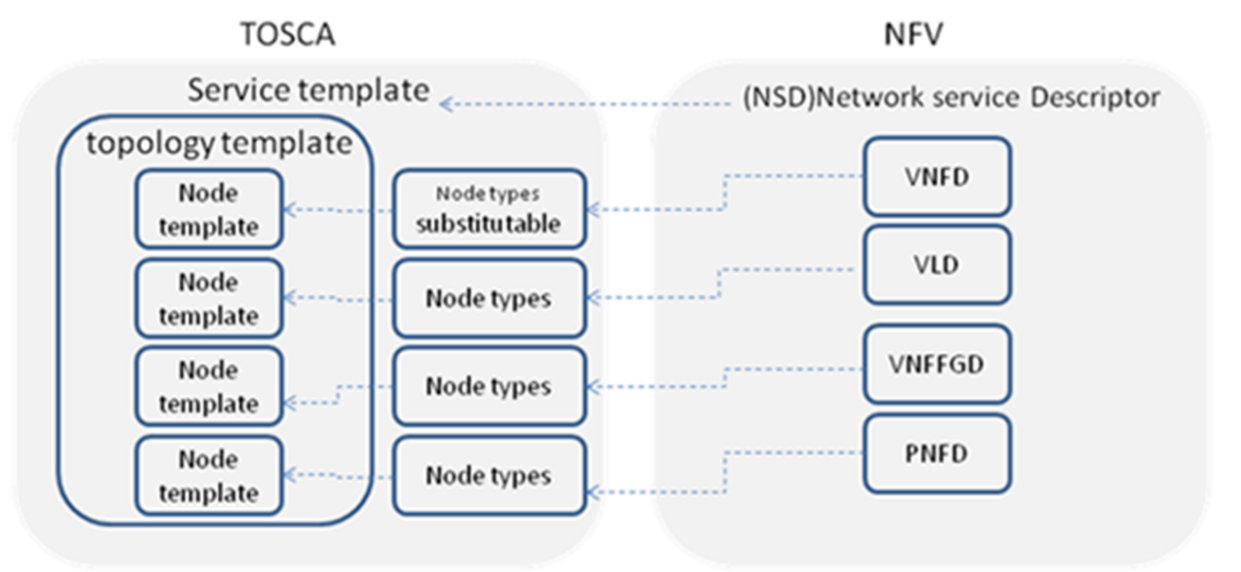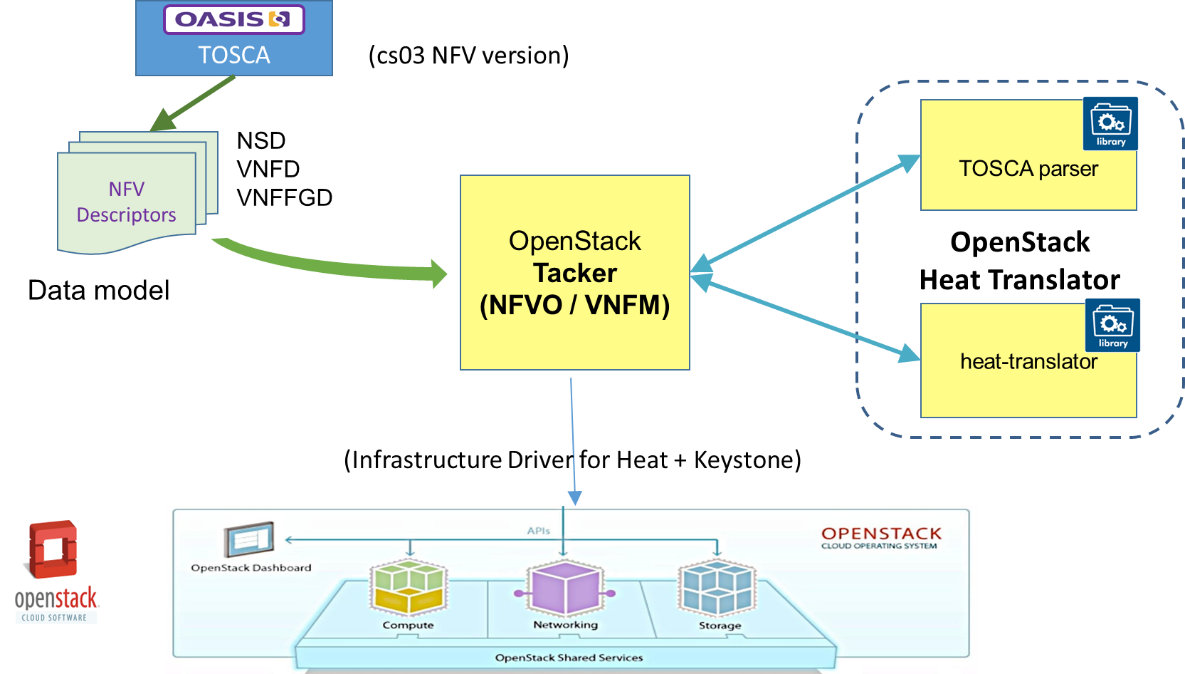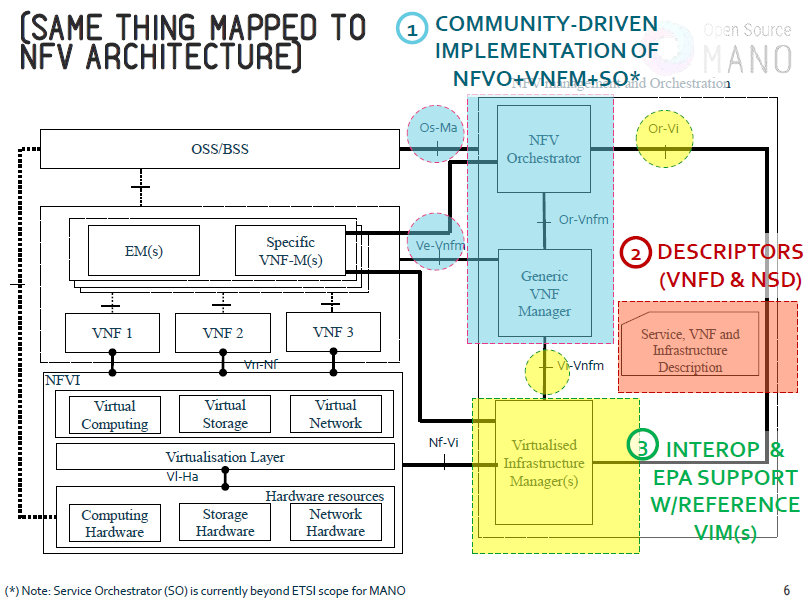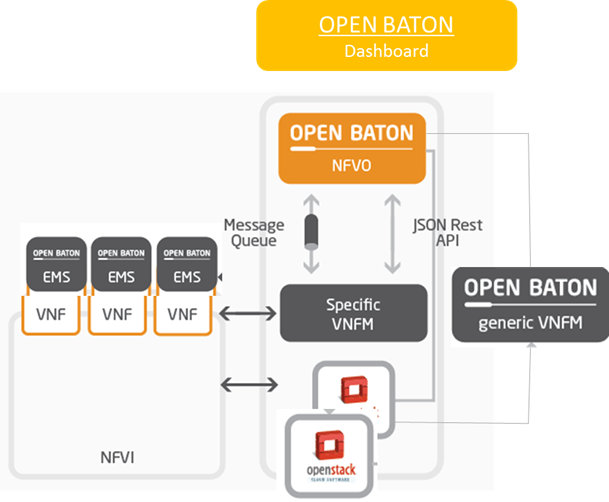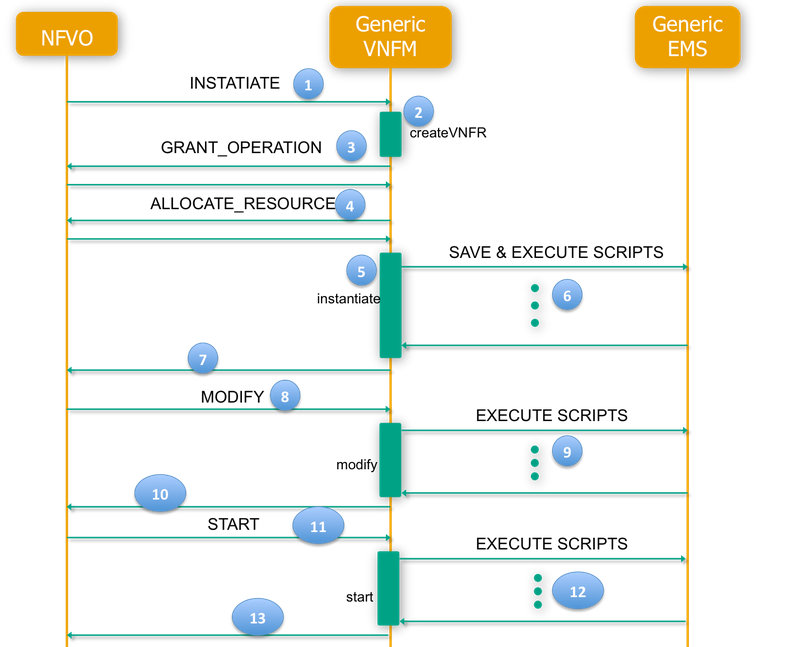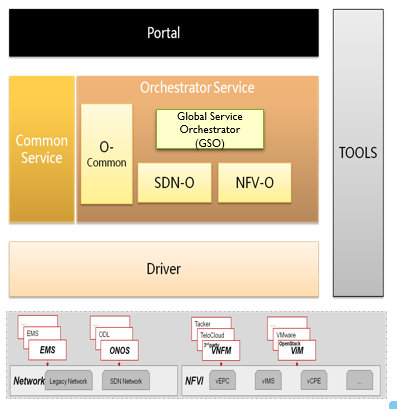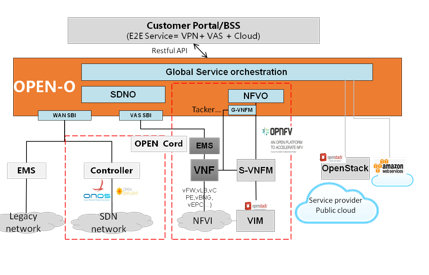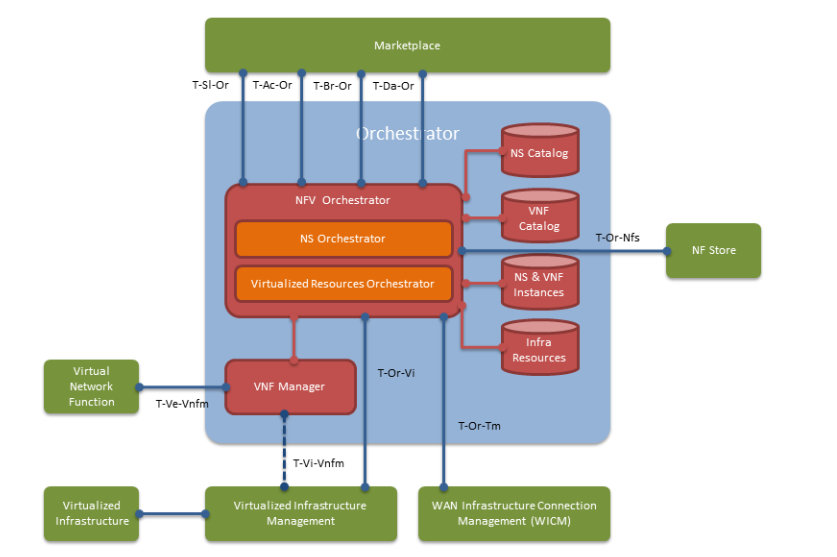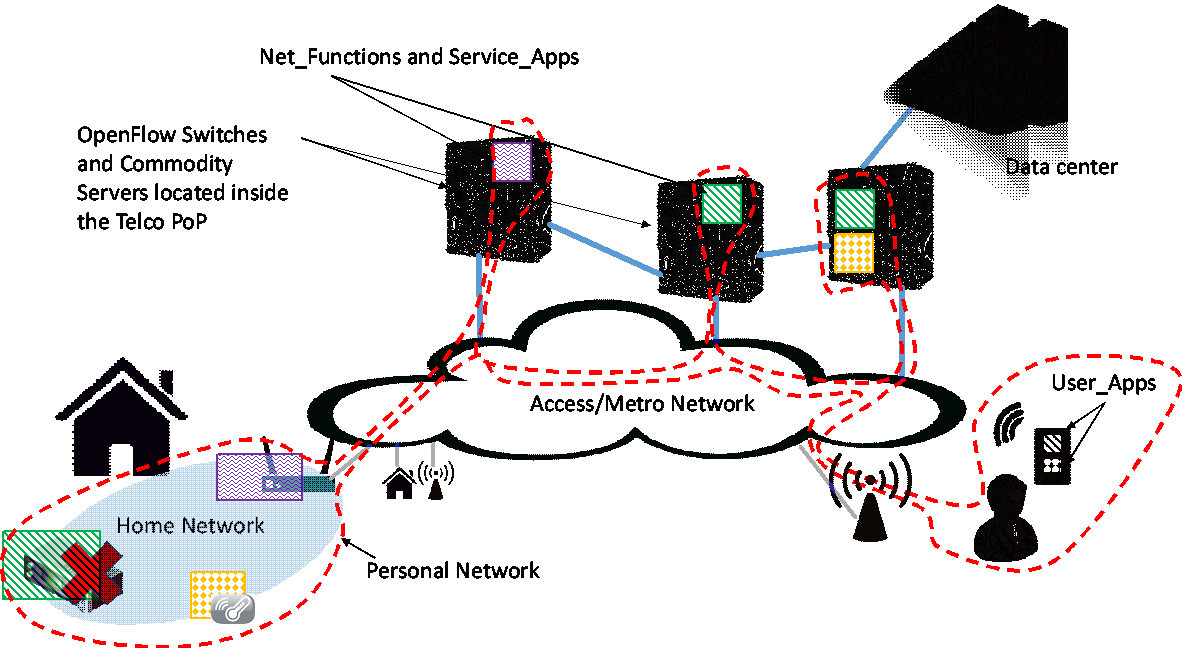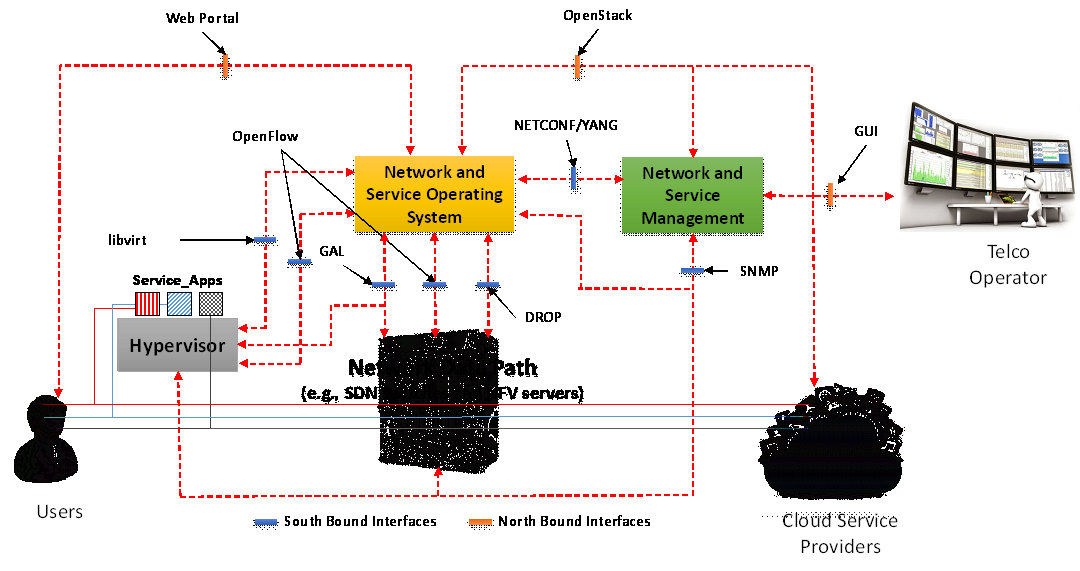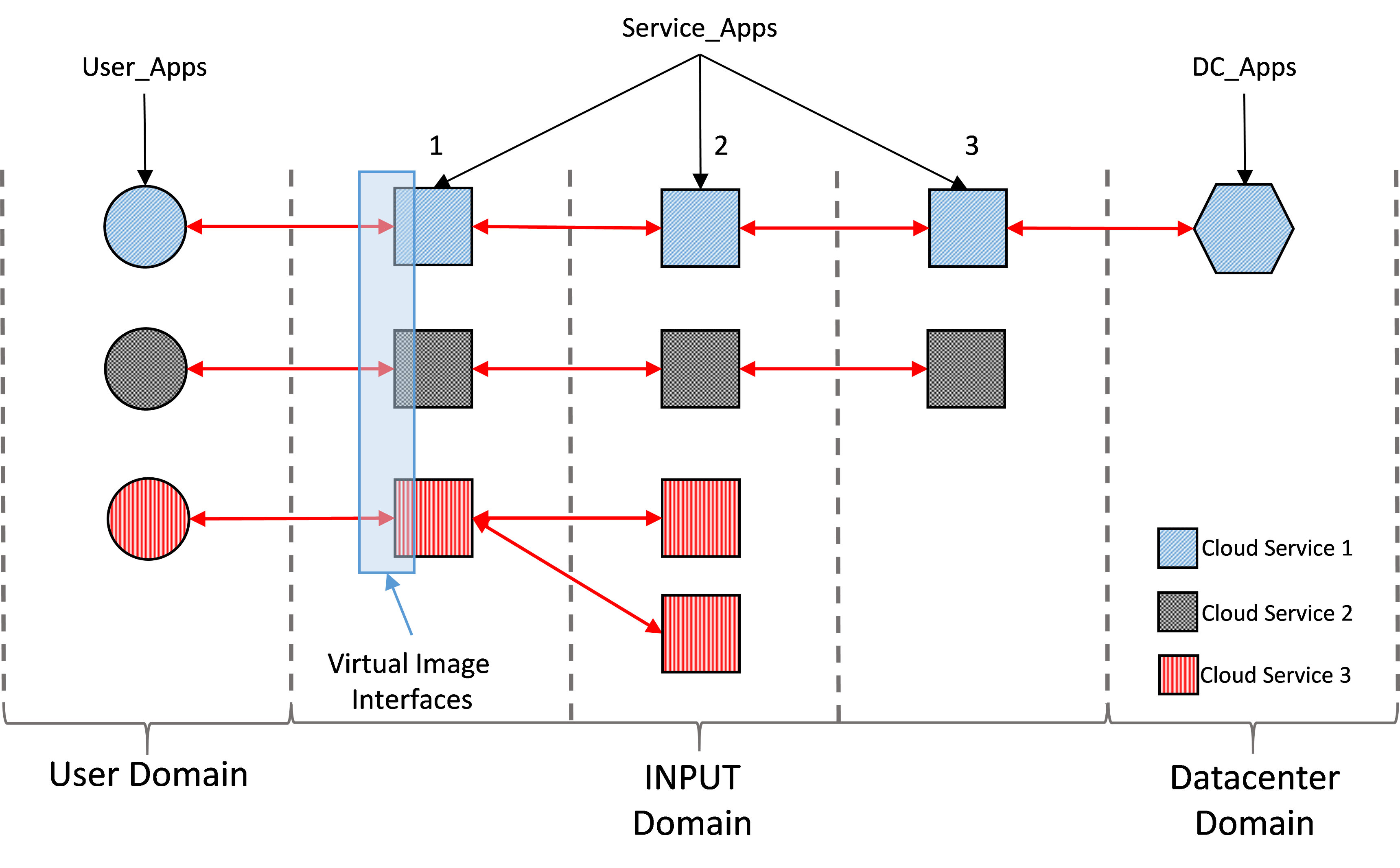Building a Converged Access Network Based on OpenFlow
Building a Converged Access Network Based on OpenFlow
Chris Matrakidis, University of Peloponnese; Evangelos Kosmatos, University of Peloponnese; Theofanis Orphanoudakis, Hellenic Open University; and Alexandros Stavdas, University of Peloponnese
Abstract: We present a path for building an SDN-based control plane that can seamlessly extend over a converged access infrastructure. The proposed solution is facilitating resource abstraction and NFV functionality and we demonstrate an abstraction for a GPON access system.
Recent trends towards SDN and NFV in access and core
Several wireline and wireless technologies are competing to dominate next generation access networks. Due to the bandwidth requirements optical networks will have a major role in these developments. Among them, Passive Optical Networks (PONs) are widely recognized as the dominant broadband scheme. This technology has also the potential to allow network convergence, e.g. when exploited for mobile network front/backhauling (MFH/MBH). However, hybrid solutions will most probably emerge in many cases. In this context, service convergence and unified network control and management mechanisms are also considered key enabling technologies beyond data plane integration through appropriate system interfaces.
To address the above requirements, Software Defined Networking (SDN) is a key enabler for decoupling control and data planes, allowing the former to exploit open software as a step towards orchestrating platforms with dissimilar operating systems. One such open-source protocol is OpenFlow (OF) which has been originally conceived to operate on Layer 2 (L2) switched and Layer 3 (L3) routers. In particular, in OF network nodes are represented as virtualized switches (OF switches) that exchange OF protocol messages with a centralized controller where all network control decisions are implemented as applications on top of the corresponding Network Operating System (NOS). Control and data plane separation is achieved through a well-defined Application Programming Interface (API), which is used to populate flow tables through OF, that are subsequently used for to perform look-ups when forwarding packets through the data path of the switching node.
Complementary to SDN are the developments in the field of “virtualization” a term that identifies the process of using general purpose hardware/processing resources to perform network functions and services (Network Function Virtualization –NFV). A remarkable example of NFV in the access domain is the CORD (Central Office Re-architected as Data Center) initiative [1]. CORD is aiming to virtualize existing proprietary hardware devices and to develop their software counterpart running on commodity hardware. CORD’s infrastructure is built on white boxes, ONOS (the open source NOS), OpenStack, and XOS open source orchestration. Thus, the objective of CORD is to utilize simplified GPON optical network unit (ONU) systems at user premises or G.Fast termination cabinets and optical line terminal (OLT) chipsets in the access node that provide only the minimal low-level L1/L2 GPON functionalities. All other higher layer functions are executed at commodity servers in a Data-Center (DC). A similar approach has been announced by NTT in its Flexible Access System Architecture (FASA), which aims to provide greater flexibility for fiber to fiber-to-the-home (FTTH) networks through the use of virtualized network functions (VNFs) introducing a white-box OLT.
Similar objectives to CORD, for service convergence based on SDN/NFV, are shared by HYDRA [2] which, however, follows a wider in scope approach. HYDRA is exploiting a converged heterogeneous network and computing infrastructure in a concept that is promoting a highly distributed DC architecture while it is pushing NFV closer to the end-user than CORD does, in a model inspired by fog computing. The active remote node (ARN) in [2] aggregates traffic from a number of heterogeneous access networks and bypasses the MAN segment by pure transmission, integrating in this way the Access and Core segments, which is shown to result in performance enhancements and a clear cost advantage. In HYDRA, the resources to aggregate the traffic from heterogeneous access systems and a micro-Datacentre (μ-DC) infrastructure are collocated at the ARN providing to network functions and applications/services access to a joint pool of networking, processing and storage resources minimizing latency compared to the alternative of transporting data back and forth to remote locations. A schematic illustration the ARN is given in Figure 1.
Figure 1: SDN control plane abstraction representing a GPON-based access domain as a hierarchical switch cascade
Current approaches on SDN-enabled access systems
Work on SDN-based control plane for GPON access systems is still at an early stage and no interface standardization has been agreed yet. Indicatively, in [3] a high level presentation for an SDN-based control plane in access is given and in [4] an amendment to the OF protocol is proposed to integrate an OF-enabled metro and a GPON access network based on an OF controller on top of the I2RS router interface. The control plane architecture is similar to the one depicted at the upper part of Figure 2, where OF is terminated at the access concentrator and the GPON access segment is managed through the OF agent via a South-Bound Interface (SBI) to the GPON management system. A similar approach was also used in [5]. However, the proposed OF-based integration is beyond the access concentrator interface to the backhaul network, preventing the GPON access segment to be seamlessly integrated to a common SDN control plane.
Figure 2: SDN control plane integration representing a GPON-based access domain as a hierarchical switch cascade
A prototype implementation based on commercial GPON access systems
As mentioned above, HYDRA is aiming to jointly orchestrate a number of heterogeneous networks is access and for this reason OF should be used without custom extensions. To do so an abstraction is necessary to hide the PON specific details, while allowing an efficient handling of its operations. For example, GPON’s Transmission Convergence (TC) layer (where QoS is managed) uses a number of internal identifiers, like Port-ID and Alloc-ID, to address logical connections and upstream T-CONT (traffic container) queues, respectively. Thus, we propose to emulate the access segment as a hierarchical switch cascade where the OLT and the ONUs associated to the same PON segment are represented as a single OF controlled switch (Figure 2).
The representation of a GPON with this switch cascade model is as follows: The traffic flows are identified as upstream (US), downstream (DS) and multicast (MC). As illustrated in Figure 2 each ONU has a number of discrete client ports that need to be mapped to internal T-CONT queues that correspond to virtual output ports with different priorities. Finally, the outputs from OLTs are interfaced to a “L2 switch” forwarding traffic either towards the Core or to the μ-DC for data processing or to initiate a data service. In DS, traffic flow matching is used to direct flows to appropriate the ONU ports, with the Port-ID allocated automatically while the US flow matching rules are applied at the client ports. Each T-CONT supported by the ONU is represented as a queue in the network port where US flows are directed, with the relevant Alloc-ID allocated automatically. Again, Port-ID can be allocated automatically when using this scheme. For MC flows, an OF group should be used of type “all” with an “action bucket” for each destination ONU.
To demonstrate the above functionality, we have developed a testbed that is based on the Alcatel-Lucent Intelligent Services Access Manager (ISAM 7330) GPON system as shown in Figure 3. Service and QoS control are initiated through a REST-based application for the communication of legacy OF Controllers (e.g. Floodlight, OpenDaylight). An Access Node Agent (ANA) communicates with the controller and automatically translates OF messages to vendor specific CLI commands.
To demonstrate the approach, a video streaming service is considered in the upstream direction. Two TCONT2 type queue profiles were used with an assured rate of 3Mb/s and 20Mb/s. The dotted rectangle in Figure 3 illustrates the PON abstraction. In this scenario a streaming video service (upstream direction) was generated using the VLC server delivering video data from PC1 (ONU1) to PC7 (Core).
Figure 3: ARN node prototype SDN implementation
To demonstrate control of GPON’s QoS through OF in our testbed, the following operations carried out: the traffic entering the GPON network from the first port of ONU1 (p2) is initially forwarded to Q1. At this time the streaming video service facilitates the available high bandwidth and it is delivered with high QoS. Then we assumed that the operator is changing the SLA to an operational condition that equals to a lower bandwidth, so by using the OF application it changes the corresponding parameters and an OF flow modification message (OFPT_ FLOW_MOD) is delivered to the ANA from the controller. In ANA, this message is appropriately translated to CLI commands, which change the forwarding and QoS scheme of the PON network in order to accommodate the new requirements. After the automatic execution of the CLI commands the traffic entering port p2 is forwarded to Q0. This downgrade in rate for the offered service from 20 Mb/s to 3 Mb/s is observed form the user receiving the video (PC7). In PC7, a tool is monitoring the network traffic throughout the scenario execution time, the results of which are illustrated in Figure 4.
Figure 4: OF flows, messages and network monitoring
Conclusions
We have shown that the GPON abstraction is possible by means of a standardized OF protocol. This is an important step towards integration of heterogeneous LANs using a common SDN control plane and network operating system to jointly orchestrate network resource slicing and sharing as well as network function virtualization.
References
[1] “CORD: The Central Office Rearchitected as a Datacenter,” whitepaper, xosproject.org/wp-content/uploads/2015/04/Whitepaper-CORD.pdf
[2] C. Matrakidis, T. G. Orphanoudakis, A. Stavdas, J.-P. Fernández-Palacios, A. Manzalini, “HYDRA: a Scalable Ultra Long Reach/High Capacity Access Network Architecture Featuring Lower Cost and Power Consumption”, IEEE Journal on Lightwave Technologies, vol.33, no.2, pp.339,348, 2015
[3] H. Woesner, D. Fritzsche, “SDN and OpenFlow for Converged Access/Aggregation Networks”, in Optical Fiber Communication Conference/National Fiber Optic Engineers Conference 2013, OSA Technical Digest (online) (Optical Society of America, 2013), paper OTu3E.4
[4] Sgambelluri, A.; Paolucci, F.; Cugini, F.; Valcarenghi, L.; Castoldi, P., "Generalized SDN control for access/metro/core integration in the framework of the interface to the Routing System (I2RS)," in Globecom Workshops (GC Wkshps), 2013 IEEE , pp.1216-1220, 9-13 Dec. 2013
[5] A. Berti Sassi, M. S. Gavidia, E. Leao Fernandes, M. Ribeiro Nascimento, “Integrated management of 10G-PON network element using NETCONF and OpenFlow,” 10th International Conference on Network and Service Management (CNSM 2014), 364-367
 Chris Matrakidis has an Electrical Engineering degree from the University of Patras and a PhD from University College London, UK in the field of digital communications. His primary research interests are in the areas of simulation and optimisation of communication systems. He has extensively worked on the applications of coding theory, GSM systems and optical networking, satellite communications. He is author or co-author of several journal and conference publications and he in several EU-funded and natioanl projects with emphasis on optical networking.
Chris Matrakidis has an Electrical Engineering degree from the University of Patras and a PhD from University College London, UK in the field of digital communications. His primary research interests are in the areas of simulation and optimisation of communication systems. He has extensively worked on the applications of coding theory, GSM systems and optical networking, satellite communications. He is author or co-author of several journal and conference publications and he in several EU-funded and natioanl projects with emphasis on optical networking.
 Evangelos Kosmatos received Dipl.Ing. and Ph.D. degrees, both in electrical and computer engineering, from the National Technical University of Athens (NTUA), Greece, in 2002 and 2007, respectively. His research interests lie in the area of network control plane design, resource allocation in broadband networks, intelligent multimedia content delivery, and optical/wireless network integration. He has participated in several EU and national research projects in the above areas.
Evangelos Kosmatos received Dipl.Ing. and Ph.D. degrees, both in electrical and computer engineering, from the National Technical University of Athens (NTUA), Greece, in 2002 and 2007, respectively. His research interests lie in the area of network control plane design, resource allocation in broadband networks, intelligent multimedia content delivery, and optical/wireless network integration. He has participated in several EU and national research projects in the above areas.
 Theofanis Orphanoudakis received his Dipl.Ing. and Ph.D. degrees, both in electrical and computer engineering, from NTUA in 1995 and 1998, respectively. Currently he is an assistant professor at the Hellenic Open University. He has participated in several EU research programs, and has led projects in the areas of broadband networking components and highspeed core and access networks. He is a Senior Member of the Technical Chamber of Greece.
Theofanis Orphanoudakis received his Dipl.Ing. and Ph.D. degrees, both in electrical and computer engineering, from NTUA in 1995 and 1998, respectively. Currently he is an assistant professor at the Hellenic Open University. He has participated in several EU research programs, and has led projects in the areas of broadband networking components and highspeed core and access networks. He is a Senior Member of the Technical Chamber of Greece.
 Alexandros Stavdas holds a B.Sc. degree in Physics from the University of Athens (Greece), M.Sc. in Optoelectronics and Laser Devices from Heriot-Watt /St. Andrews University (U.K.), and Ph.D. from University College London (U.K). Currently, he is Full Professor and Director of Optical Systems and Networks Laboratory in the Department of Informatics and Telecommunications, University of Peloponnese. He is an author of over 150 journal and conference papers. He has also served as the Technical Program Committee Chairman and a Member of the Technical Program Committees in several International Conferences.
Alexandros Stavdas holds a B.Sc. degree in Physics from the University of Athens (Greece), M.Sc. in Optoelectronics and Laser Devices from Heriot-Watt /St. Andrews University (U.K.), and Ph.D. from University College London (U.K). Currently, he is Full Professor and Director of Optical Systems and Networks Laboratory in the Department of Informatics and Telecommunications, University of Peloponnese. He is an author of over 150 journal and conference papers. He has also served as the Technical Program Committee Chairman and a Member of the Technical Program Committees in several International Conferences.
Editor:
 Eliezer Dekel is an IBM Senior Technical Staff Member and Chief Architect for Distributed Systems in IBM Research - Haifa. In his current role he focuses on developing infrastructure technologies for very large scale distributed systems. Eliezer Dekel is a steering board member of the European Alliance for Innovations (EAI). He is the editor in chief of The EAI Endorsed Transactions on Cloud Systems, and an associate editor of ACM Computing Surveys. Dr. Dekel served on numerous conferences program committees and organized, or served as chair in some of them. Since joining the Haifa Research Lab in 1992, he has been involved in research in the areas of distributed and fault-tolerant computing, software defined systems, service-oriented technology, and software engineering. He is currently working on technologies for providing Quality of Service, with a focus on dependability, in very large scale multi-tier and multi-layered environments. For this area he initiated together with colleagues the very successful International Workshop on Large Scale Distributed Systems and Middleware (LADIS), now sponsored by ACM. This workshop was one of the first workshops to focus on the foundations of "cloud computing." Eliezer is also involved in several EU FP7 ICT funded projects.
Eliezer Dekel is an IBM Senior Technical Staff Member and Chief Architect for Distributed Systems in IBM Research - Haifa. In his current role he focuses on developing infrastructure technologies for very large scale distributed systems. Eliezer Dekel is a steering board member of the European Alliance for Innovations (EAI). He is the editor in chief of The EAI Endorsed Transactions on Cloud Systems, and an associate editor of ACM Computing Surveys. Dr. Dekel served on numerous conferences program committees and organized, or served as chair in some of them. Since joining the Haifa Research Lab in 1992, he has been involved in research in the areas of distributed and fault-tolerant computing, software defined systems, service-oriented technology, and software engineering. He is currently working on technologies for providing Quality of Service, with a focus on dependability, in very large scale multi-tier and multi-layered environments. For this area he initiated together with colleagues the very successful International Workshop on Large Scale Distributed Systems and Middleware (LADIS), now sponsored by ACM. This workshop was one of the first workshops to focus on the foundations of "cloud computing." Eliezer is also involved in several EU FP7 ICT funded projects.
Eliezer has a Ph.D. and M.Sc. in computer science from the University of Minnesota, and a B.Sc. in mathematics from Ben Gurion University, Israel. Prior to joining IBM Research - Haifa, Eliezer served on the faculty of the University of Texas at Dallas computer science department for more than ten years.
Open Baton: A Framework for Virtual Network Function Management and Orchestration for Emerging Software-Based 5G Networks
Open Baton: A Framework for Virtual Network Function Management and Orchestration for Emerging Software-Based 5G Networks
Giuseppe Antonio Carella and Prof. Dr. Thomas Magedanz, Technische Universität Berlin, Fraunhofer FOKUS
The rapid emergence of Software Defined Network technologies, together with the ever-growing number of mobile Internet users is paving the way to a radical change in Next Generation Network Infrastructures. However, the requirement to continually cope with the increasing range and number of user demands is transforming telecom operators into merely dumb pipe providers, while Over-the-Top service providers are gaining momentum utilizing their resources and infrastructures.
Meanwhile, telecom operators urgently need to transform their infrastructures, especially to accommodate the requirements of the “everything is fully connected” approach. The path forward is clear: telecom operators must radically change their communication networks in order to support this huge transformation, otherwise it is almost certain that their revenues will decline.
Network Function Virtualization (NFV) [1] and Software-Defined Network (SDN) [2] trends represent important enablers for restructuring operators’ networks. NFV proposes decoupling software from hardware and moving current network functions to common cloud infrastructures, while SDN offers increasing flexibility in network operations combined with decoupling the control and data planes of network functions.
Those trends are strongly supported by standardization bodies, which are pushing for standardized architectures and interfaces in order to allow interoperability between different vendor solutions. However, at this stage, it is rather complex to foresee a clear definition of the interfaces and protocols without Proof of Concepts which can be used for validating the proposed solutions.
Fraunhofer FOKUS and TU Berlin collaborated on integrating OS solutions together with industry and academia, in their so called “testbeds to go”. Exploiting their expertise in analyzing Next Generation Network (NGN) Infrastructures and implementing versatile tools, last year they launched a new open source platform, Open Baton [3][4]. This new platform makes it possible to build a complete NFV environment based on the ETSI NFV MANO [5] specification.
Open Baton enables Virtual Network Services’ deployment on top of multiple cloud-infrastructures. In its second release, Open Baton switched to an AMQP (Advanced Message Queuing Protocol) based standard messaging system (RabbitMQ) that provides a standard interface for the communication between entities and simplifies the interoperability with external components and with Virtual Network Function Managers (VNFMs). In addition, an extended set of new external modules have been released, including an auto-scaling system for the automatic runtime management of the Virtual Network Function operations and a fault management system. The event mechanism was also improved, providing interested entities with a more precise mechanism for retrieving VNFs’ lifecycle events. These modules, combined with the improved plugin mechanism and the Network Function Virtualization Orchestrator Software Development Kit (NFVO-SDK), allow the fast prototyping of new advanced features without requiring any modifications to the orchestration logic.
Fig 1 – Open Baton rel.2 Architecture
OpenBaton release 2 contains the following components:
- a Network Function Virtualization (NFV) Orchestrator that dynamically orchestrates carrier-grade network functions and services as well as infrastructure resources;
- a generic Virtual Network Function Manager (gVNFM) that dynamically manages the functions;
- a plugin mechanism for adding and removing different types of Virtualized Infrastructure Manager (VIM) without having to re-write anything in the orchestration logic;
- a powerful event engine based on a pub/sub mechanism for the dispatching of lifecycle events to registered external modules;
- an auto-scaling engine which can be used for automatic runtime management of the scaling operations of the Virtual Network Functions (VNFs);
- a fault management system which can be used for automatic runtime management of faults at any level;
- a set of libraries for the creation of customized VNFMs,
- a Command Line Interface (CLI), useful for quickly managing network functions from a terminal; and
- a user-friendly dashboard through which the platform can be administrated.
Each of these components can be started or stopped independently according to the use case. Open Baton (rel. 2) combined with a monitoring solution (i.e. Zabbix) represents the most advanced open source MANO platform available for NFV prototyping. The platform can be easily installed on existing cloud infrastructures, such as OpenStack.
In addition, the Open Baton team is already working on new features which will be added soon on the github repository. Those features include but are not limited to the application of machine learning concepts in the context of autoscaling, very useful for meeting the Service Level Agreements (SLA) Key Performance Indicators (KPIs) at runtime, an extension of the VIM plugin for interoperating with Amazon Cloud and CloudStack, and the instantiation of network slices in multi-datacenter scenarios.
The main objective is to provide a set of tools which can be used by researchers around the globe to build their own 5G/SDN/NFV/MEC testbeds, as well as to create the knowhow required for emerging 5G standards with initial Proof of Concepts (PoC). Open Baton can be integrated with other “OpenXXX” toolkits developed at Fraunhofer FOKUS in the context of the FOKUS 5G Playground [6][7], which combines both Open Source toolkits and closed source toolkits/pre-products developed by Fraunhofer FOKUS and TU Berlin.
Get started now: http://openbaton.org
References
[1] ETSI NFV Architectural Framework v1.2.1 (2014-12), online http://www.etsi.org/deliver/etsi_gs/NFV/001_099/002/01.02.01_60/gs_NFV002v010201p.pdf
[2] Software Defined Networking (SDN) Definition, online: https://www.opennetworking.org/sdn-resources/sdn-definition
[3] Open Baton: an open source Network Function Virtualisation Orchestrator (NFVO) fully compliant with the ETSI NFV MANO specification, online http://openbaton.org
[4] Open Baton video, online https://www.youtube.com/watch?v=e9VbeRohjJ8&feature=youtu.be
[5] ETSI GS NFV-MAN 001 (MANO), online https://www.etsi.org/deliver/etsi_gs/NFV-MAN/001_099/001/01.01.01_60/gs_NFV-MAN001v010101p.pdf
[6] 5G Playground, online https://www.fokus.fraunhofer.de/go/en/fokus_testbeds/5g_playground
[7] 5G Berlin initiative, online www.5g-berlin.org
 Thomas Magedanz is a professor in the electrical engineering and computer sciences faculty at the Technical University of Berlin, Germany, leading the chair for next
generation networks (Architektur der Vermittlungsknoten / AV) supervising Master and PhD Students. In addition, he is director of the 'NGNI' division at the Fraunhofer Institute FOKUS, which provides toolkits and open experimental platforms for fixed and mobile Next Generation Networks, service oriented architecture based Service Delivery Platforms, and the Future Internet for international operators and vendors. Prof. Magedanz is one of the founding members of FOKUS (1988) and member of the management team. Prof. Magedanz is a globally recognised technology expert, based on his 20 years of practical experiences gained by managing various research and development projects in the various fields of today's convergence landscape (namely IT, telecoms, internet and entertainment).
Prof. Magedanz is senior member of the IEEE, editorial board member of several journals, and the author of more than 250 technical papers/articles. He is the author of two books on IN standards and IN evolution. Prof. Magedanz is a globally recognized tutorial and keynote speaker at major academic and industrial workshops, conferences and symposia around the world. Examples include: IEEE IN workshop, IEEE ISS, IEEE NOMS, IEEE IM, IEEE ICC, etc.
Thomas Magedanz is a professor in the electrical engineering and computer sciences faculty at the Technical University of Berlin, Germany, leading the chair for next
generation networks (Architektur der Vermittlungsknoten / AV) supervising Master and PhD Students. In addition, he is director of the 'NGNI' division at the Fraunhofer Institute FOKUS, which provides toolkits and open experimental platforms for fixed and mobile Next Generation Networks, service oriented architecture based Service Delivery Platforms, and the Future Internet for international operators and vendors. Prof. Magedanz is one of the founding members of FOKUS (1988) and member of the management team. Prof. Magedanz is a globally recognised technology expert, based on his 20 years of practical experiences gained by managing various research and development projects in the various fields of today's convergence landscape (namely IT, telecoms, internet and entertainment).
Prof. Magedanz is senior member of the IEEE, editorial board member of several journals, and the author of more than 250 technical papers/articles. He is the author of two books on IN standards and IN evolution. Prof. Magedanz is a globally recognized tutorial and keynote speaker at major academic and industrial workshops, conferences and symposia around the world. Examples include: IEEE IN workshop, IEEE ISS, IEEE NOMS, IEEE IM, IEEE ICC, etc.
More details: http://www.av.tu-berlin.de/menue/team/prof_dr_thomas_magedanz/
 Giuseppe Antonio Carella is a Senior Researcher at the Fraunhofer FOKUS and at the Technische Universität Berlin (TUB). He received his M.Sc. in Engineering of Computer Science from the Alma Mater Studiorum University of Bologna in 2011. During his studies he focused on Next Generation Network Infrastructure, especially in IMS services, like presence and messaging. In 2012 he joined the Next Generation Networks (AV) team at the Technical University Berlin, where he started investigating topics related with SDN and NFV in the context of his PhD studies. His strong background in Cloud Computing is the basis of his research and contributed to the virtualization of the software-based Network Functions developed at Fraunhofer FOKUS, namely OpenEPC and Open5GCore. He is currently leading the team developing the Open Baton toolkit an open source platform providing the means for building a comprehensive NFV environment.
Giuseppe Antonio Carella is a Senior Researcher at the Fraunhofer FOKUS and at the Technische Universität Berlin (TUB). He received his M.Sc. in Engineering of Computer Science from the Alma Mater Studiorum University of Bologna in 2011. During his studies he focused on Next Generation Network Infrastructure, especially in IMS services, like presence and messaging. In 2012 he joined the Next Generation Networks (AV) team at the Technical University Berlin, where he started investigating topics related with SDN and NFV in the context of his PhD studies. His strong background in Cloud Computing is the basis of his research and contributed to the virtualization of the software-based Network Functions developed at Fraunhofer FOKUS, namely OpenEPC and Open5GCore. He is currently leading the team developing the Open Baton toolkit an open source platform providing the means for building a comprehensive NFV environment.
More details: http://www.av.tu-berlin.de/carella
Editor:
 Prof. Noël Crespi holds Masters degrees from the Universities of Orsay (Paris 11) and Kent (UK), a diplome d’ingénieur from Telecom ParisTech, a Ph.D and an Habilitation from Paris VI University (Paris-Sorbonne). From 1993 he worked at CLIP, Bouygues Telecom and then at Orange Labs in 1995. He took leading roles in the creation of new services with the successful conception and launch of Orange prepaid service, and in standardisation (from rapporteurship of IN standard to coordination of all mobile standards activities for Orange). In 1999, he joined Nortel Networks as telephony program manager, architecting core network products for EMEA region. He joined Institut Mines-Telecom in 2002 and is currently professor and Program Director, leading the Service Architecture Lab. He coordinates the standardisation activities for Institut Mines-Telecom at ITU-T, ETSI and 3GPP. He is also an adjunct professor at KAIST, an affiliate professor at Concordia University, and is on the 4-person Scientific Advisory Board of FTW (Austria). He is the scientific director the French-Korean laboratory ILLUMINE. His current research interests are in Service Architectures, Services Webification, Social Networks, and Internet of Things/Services.
Prof. Noël Crespi holds Masters degrees from the Universities of Orsay (Paris 11) and Kent (UK), a diplome d’ingénieur from Telecom ParisTech, a Ph.D and an Habilitation from Paris VI University (Paris-Sorbonne). From 1993 he worked at CLIP, Bouygues Telecom and then at Orange Labs in 1995. He took leading roles in the creation of new services with the successful conception and launch of Orange prepaid service, and in standardisation (from rapporteurship of IN standard to coordination of all mobile standards activities for Orange). In 1999, he joined Nortel Networks as telephony program manager, architecting core network products for EMEA region. He joined Institut Mines-Telecom in 2002 and is currently professor and Program Director, leading the Service Architecture Lab. He coordinates the standardisation activities for Institut Mines-Telecom at ITU-T, ETSI and 3GPP. He is also an adjunct professor at KAIST, an affiliate professor at Concordia University, and is on the 4-person Scientific Advisory Board of FTW (Austria). He is the scientific director the French-Korean laboratory ILLUMINE. His current research interests are in Service Architectures, Services Webification, Social Networks, and Internet of Things/Services.
http://noelcrespi.wp.tem-tsp.eu/
OpenSource MANO
OpenSource MANO
Marie-Paule Odini, HPE
This article provides an overview of ETSI NFV MANO and the opensource landscape in this area.
MANO stands for “Management and Orchestration” and it is the functional block that has been defined by ETSI NFV as part of the NFV Architectural Framework. OSM stands for opensource MANO.
Fig 1 – ETSI NFV Architectural Framework
The NFV MANO covers the orchestration and lifecycle management of physical and/or software resources that support the infrastructure virtualisation, and the lifecycle management of VNFs. NFV Management and Orchestration focuses on all virtualisation-specific management tasks necessary in the NFV framework. It is composed of three building blocks:
- The VIM, Virtualized Infrastructure Manager, manages the NFVI (Network Function Virtualized Infrastructure). This is typically where you find elements like OpenStack.
- The VNMF(s), VNF Manager(s) which manages the lifecycle management of the VNF (e.g. instantiation, update, query, scaling, termination). They may be multiple VNF Manager in charge of one or multiple VNF, or a set of generic VNF Manager that can be configured to manage multiple VNF, or a single generic VNF Manager that would be configured to manage the lifecycle of all the VNF. ETSI NFV is open to those different options defined in GS/NFV-IFA009, MANO architectural options report.
- The NFVO, NFV Orchestrator that is in charge of the orchestration and management of NFV infrastructure and software resources, and realizing network services on NFVI.
But besides these functional blocks, ETSI NFV has defined open interfaces between those blocks, typically:
- Nf-Vi: between the VIM and the NFVI
- Or-Vi: between the NFVO and the VIM => ETSI GS NFV-IFA 005
- Vi-Vnfm: between the VNFM and the VIM => ETSI GS NFV-IFA 006
- Or-Vnfm: between the VNF Manager(s) and the NFVO => ETSI GS NFV-IFA 007
- Ve-Vnfm: between the [VNF-EM] network functions and the VNFM(s) => ETSI GS NFV-IFA 008
- Os-Ma: between NFVO and OSS/BSS => ETSI GS NFV-IFA 0013/0012
- Some of these interfaces are being specified in different specifications that are being issued by ETSI NFV as part of Release 2 and are made publicly available on the ETSI NFV portal. Work in progress is actually also publicly available in the ETSI NFV open area portal.
Fig 2 – ETSI NFV Release 2 Interface & Architecture (IFA)
In parallel to ETSI NFV Specifications, a few opensource projects have been initiated. Opensource projects have different flavors, they may be governed by a single entity or by an opensource community, they may use different licenses, and they make some implementation choices in terms of architecture, language, etc. The focus in this article is to cover Opensource NFV-MANO projects (blue box in Figure 2).
The following table provides a list of MANO opensource projects.
Note that this table may not be exhaustive as a few labs or companies may have released some code on github or other platforms that is not listed here. Some projects are also collaborating and are being covered under this umbrella project: e.g. Riftware and Juju are covered as part of ETSI OSM. Also the objective of this article is not to compare these different initiatives, nor to be exhaustive, but to illustrate the ETSI NFV MANO with some live implementations and illustrate some choices made by some of these different projects.
Also before diving into this topic, it is important to understand that these projects started in parallel to ETSI NFV release 2 specifications, so most of them, if not all, have based their work on ETSI NFV phase 1 released specifications--meaning functional architecture, reference points high level definition and general concepts. They also have different operational modes, typically among the 3 categories described below, knowing that ETSI OSM seems to evolve to model #1 with a more open community governance, while Open-o may pick some existing components like ETSI OSM did and start with a model #2 also before opening up to the model #1.
Fig 3 – Opensource project models
OpenStack Tacker has been around for a few years now. It started as a spinoff from Neutron called ServiceVM and was renamed Tacker and promoted in Vancouver OpenStack Summit in 2015. Initially defined by a handful of people including HP, it was pretty quiet until OPNFV and couple other projects started to look into this code as a tool to exercise the infrastructure for other projects they were working on, i.e. SFC in OPNFV, and map to ETSI NFV VNFM functions.
Tacker is managed under the OpenStack umbrella so it follows the OpenStack community project guidelines and governance model. Step by Step Tacker has moved from being an independent project in OpenStack, to the big tent and now part of the Mitaka release.
Fig 4 – Tacker project evolution in OpenStack
Tacker is working very closely with OASIS TOSCA and provided some requirements for CSD03 version of OASIS TOSCA Simple Profile for NFV which is currently used to define Network Service Descriptors (NSD), VNF Descriptors (VNFD) and VNF Forwarding Graph Descriptors (VNFFGD) using TOSCA templates. These templates are then parsed and translated into Heat Templates and transmitted to a driver that interfaces OpenStack Heat and Keystone.
Fig 5 – TOSCA mapping to ETSI NFV descriptors
Tacker provides an integrated building block for NFVO-VNFM, so does not expose the internal Or-Vnfm interface, but supports external VNFM. As part of Tacker embedded VNFM, following capabilities are supported:
- VNF Catalog with a repository of VNF descriptors (VNFDs) in a database
- VNF Instantiation and Termination using Heat using TOSCA to Heat translation in Tacker
- VNF Configuration injection during instantiation, update and restart using the Loadable VNF specific management-driver
- Loadable per-VNF Health Monitoring
- Self healing according to VNFD policy
Fig 5. OpenStack Tacker Architecture
While in Liberty, Tacker was only able to support placement of VNF is a single OpenStack instance, with Mitaka Tacker will support multi-site and having multiple instances of OpenStack VIM, even with different versions.
ETSI has created a new type of entity called OSG, OpenSource Group, to allow opensource projects to occur as part of ETSI. The first OSG project happens to be for NFV-MANO, it is called “OSM: OpenSource MANO” and was kicked off in April 2016. It is pretty recent but aggregates some components that have been around a bit longer, typically Telefonica project OpenMANO, Rift.io riftware software and Canonical Juju charms software. All these projects were already available on GitHub as opensource projects. While ETSI has been focusing on standard specification so far, this new initiative is a new model built around a set of opensource development tools such as GitHub, Jenkins, hosted by ETSI and an opensource governance model. While it starts with a set of predefined software it is now open to new contributions to enhance and expand the current project.
The mapping to ETSI NFV Architecture is also very clearly articulated, again at the functional block and reference points level.
Fig 6 – ETSI OSM mapping to ETSI NFV architectural framework
Similar to Tacker, ETSI OSM provides an integrated building block that combines NFVO+ Generic VNFM, supports external specific VNFM, and supports integration with OpenStack VIM, but also other VIM thanks to an open adaptor approach. Integration points exist between the NFV Orchestration function and the VIM, as well as between VNFM functions and VIM, but they do not map currently the ETSI NFV specifications. Similarly integration points exist with Operation Support System/Business Support Systems (OSS/BSS) and specific VNFM as well as [VNF-EM] but not mapping current IFA related specs.
ETSI OSM leverages OpenMANO for Resource Orchestration, and Juju for VNF configuration and management, but OSM also introduces a component for Service Orchestration, provided by Rift.io Riftware which is beyond the ETSI NFV current scope.
Fig 7 - ETSI OSM architecture
ETSI OSM objective is to define an information model aligned with ETSI NFV release 2 Information model. A roadmap is being discussed which basically would issue a Release 0 based on the three independent existing modules (OpenMANO, Riftware, JuJu) with an integrated data model for Network Service and VNF, on git+gerit+jenkins, with documentation, and then follow up releases every 6 months.
Open Baton is an opensource project led by Fraunhofer Focus and TU Berlin. It is now being used by a few European projects and is available under GitHub and apache 2.0 license. Open Baton is also based on ETSI NFV phase 1 reference architectural framework and MANO specifications. It is not aligned yet with the IFA interface specifications. It provides an NFVO building block, a Generic VNFM, a component for EMS, a dashboard, supports multiple OpenStack VIM and provides a plug-in mechanism for other VIM. It also supports specific VNFM.
Fig 8 – Open Baton architecture
Implemented in java with the spring.io framework, it supports VNF Package defined with json to include the VNF descriptors, scripts and metadata, and a link to the image. It supports TOSCA templates that are combined with scripts and metadata into a CSAR (Cloud Service Archive) packages. The NFVO reads these packages and process the data, and returns a json translation of the NSD. The NFVO is using RabbitMQ to talk AMQP protocol to call the VNFM. The Generic EMS will be invoked to configure the new instance. Then the NFVO uses Zabbix to monitor the VNF.
Lifecycle operations supported are: instantiate, configure, start, stop, terminate.
Fig 9 – Open Baton typical call flow
Open-o is a community project launched by Linux Foundation with a kick off in June 2016. It is a very recent initiative and somewhat surprising to see in parallel to OpenStack Tacker also hosted by Linux Foundation, but there are other topics like SDN controller where Linux Foundation is hosting multiple projects , ie OpenDaylight and ONOS. Anyway, open-o is defining a blueprint and has signed up 15 members, including a number of existing opensource players like Gigaspaces with Cloudify. The current blueprint is a draft proposal that will be discussed, reviewed, potentially updated by the members before approval. Open-o is also calling for code contributions so different players and new players may come to the table, including individual contributors, with code.
Fig 10 – open-o current architecture/blueprint proposal
It is interesting to observe that open-o plans to include elements defined by ETSI NFV such as NFV-O, and integration with EMS, VNFM and VIM, including OpenStack. But open-o, like OSM, is introducing a ‘Service Orchestrator’ component on top of the NFVO resource orchestration function.
In terms of data structure, open-o is proposing to use a GUI for modeling, having a common Information and Data model, perform model conflict detection, both static and dynamic, and use both TOSCA and Yang.
Open-o is also planning to collaborate strongly with other opensource projects, like OpenStack, OPNFV and openCORD in particular as shown in the below diagram
Fig 11 – open-o collaboration with other Linux Foundation projects
Also it is interesting to note that open-o is explicitly referencing an SDN Orchestrator (SDNO) in its architecture, put side by side with NFVO and in Fig 9 above OPEN CORD and ONOS SDN controller. While this is somewhat confusing, it is indeed very interesting to see one of these MANO opensource projects expanding on SDN Controller / SDN orchestration versus NFV Orchestration. Hopefully this will help ETSI NFV progress beyond current EVE005, as well as provide the industry with some clarification of these integration and deployment models.
More to come on open-o in the coming months.
T-NOVA is a European project under FP7 program that is now being completed and is releasing some of its work under opensource. This includes a MarketPlace component, an Orchestrator called TENOR, a VIM monitor, and VNF (Virtual Network Function) & NS (Network Service) descriptors.
If we focus on the Orchestration block, as shown in Fig 10, we notice that this block includes both the ETSI NFV Orchestrator (NFVO) split in two functions: Network Service Orchestrator (NSO) and Resource Orchestrator (RO), the embedded VNFM and the metadata & instance repositories. It also provides interfaces similar to ETSI NFV interfaces such as Ve-Vnfm, Vi-Vnfm and Or-Vi. However it does not expose the interface between its NFVO and NFVM, nor provides an open Or-Vnfm to support external VNFM. However it introduces some new interfaces southbound like Or-Tm to the WAN infrastructure – while ETSI NFV is a bit vague but assumes this is Or-Vi. T-Nova is also defining some more explicit interfaces northbound towards the OSS, the portal, dashboard etc, as well as to the Network Function Store.
Fig 12 – T-Nova Orchestrator Architecture
As T-Nova publishes some results on its portal, we will be able to better understand what has been defined by this project. In the meantime, opensource code is also released under GitHub. This includes TENOR, the T-Nova Orchestrator, with some assumptions. For instance the Network Services are limited to 1 VNF, the VDU limited to 1 VNFC. T-Nova descriptors Json schema are translated to Heat templates. Other opensource components include descriptors, a VIM monitor, a marketplace that includes some tools to define network services, a Network Function Store, a rating/billing framework, a dashboard. Some of these elements map high level the ETSI NFV MANO, while others are not in the ETSI NFV scope today, for instance rating/billing or open NF Store.
Summary
In summary, those different opensource projects have different structure, being either driven by a specific group or under an opensource community governance being OpenStack, Linux Foundation or ETSI. They also use different licensing model even though Apache 2.0 is the most common license. And they have slightly different scope, however they all refer to ETSI NFV reference architecture in terms of building blocks, some reference points and high level lifecycle management operations and focus primarily on NFVO and VNFM. A few of them have introduced some additional elements which are today out of scope of ETSI NFV.
Overall these are interesting experiments that provide some closed loop validation of the ETSI NFV specification and should contribute some inputs to either tune the existing specs or expand into some missing areas. It is still very early stage on the MANO opensource space though as we can see with the maturity stage of these different projects.
The table below provides some highlights of the main common elements and differentiators:
|
|
Tacker |
ETSI OSM |
Open Baton |
Open-o |
TENOR |
|---|---|---|---|---|---|
|
Community Governance |
Y |
Y |
- |
Y |
- |
|
Apache 2.0 license |
Y |
Y |
Y |
Y |
Mainly but also Boost license* |
|
Release |
multiple |
Rel 0 |
1st version |
Not yet |
1st incomplete |
|
NFVO |
Y |
Y |
Y |
Y |
Y |
|
NFVO split: NSO/RO |
- |
Y |
- |
- |
Y |
|
Generic VNFM |
Y |
Y |
Y |
Y |
Y |
|
Specific VNFM support |
Y |
Y |
Y |
Y |
- |
|
OpenStack |
Y |
Y |
Y |
Y |
Y |
|
Multiple OpenStack |
Y |
Y |
Y |
Y |
- |
|
Other VIM |
Y |
Y |
Y |
Y |
- |
|
TOSCA |
Y |
- |
- |
Y |
- |
|
Yang |
- |
- |
- |
Y |
- |
|
Dashboard |
- |
- |
Y |
Portal (?) |
Y |
|
Service Orchestrator |
- |
Y |
- |
Y |
- |
*Boost license is used in TENOR for some Jsoncon libraries
 Marie-Paule Odini holds a master's degree in electrical engineering from Utah State University. Her experience in telecom experience including voice and data. After managing the HP worldwide VoIP program, HP wireless LAN program and HP Service Delivery program, she is now HP CMS CTO for EMEA and also a Distinguished Technologist, NFV, SDN at Hewlett-Packard. Since joining HP in 1987, Odini has held positions in technical consulting, sales development and marketing within different HP organizations in France and the U.S. All of her roles have focused on networking or the service provider business, either in solutions for the network infrastructure or for the operation.
Marie-Paule Odini holds a master's degree in electrical engineering from Utah State University. Her experience in telecom experience including voice and data. After managing the HP worldwide VoIP program, HP wireless LAN program and HP Service Delivery program, she is now HP CMS CTO for EMEA and also a Distinguished Technologist, NFV, SDN at Hewlett-Packard. Since joining HP in 1987, Odini has held positions in technical consulting, sales development and marketing within different HP organizations in France and the U.S. All of her roles have focused on networking or the service provider business, either in solutions for the network infrastructure or for the operation.
Editor:
 Laurent Ciavaglia is currently senior research manager at Nokia Bell Labs where he coordinates a team specialized in autonomic and distributed systems management, inventing future network management solutions based on artificial intelligence.
Laurent Ciavaglia is currently senior research manager at Nokia Bell Labs where he coordinates a team specialized in autonomic and distributed systems management, inventing future network management solutions based on artificial intelligence.
In recent years, Laurent led the European research project UNIVERSELF (www.univerself-project.eu) developing a unified management framework for autonomic network functions. , has worked on the design, specification and evaluation of carrier-grade networks including several European research projects dealing with network control and management.
As part of his activities in standardization, Laurent participates in several working groups of the IETF OPS area and is co-chair of the Network Management Research Group (NRMG) of the IRTF, member of the Internet Research Steering Group (IRSG). Previously, Laurent was also vice-chair of the ETSI Industry Specification Group on Autonomics for Future Internet (AFI), working on the definition of standards for self-managing networks.
Laurent has co-authored more than 80 publications and holds 35 patents in the field of communication systems. Laurent also acts as member of the technical committee of several IEEE, ACM and IFIP conferences and workshops, and as reviewers of referenced international journals, and magazines.
The INPUT Platform: Personal Services in the Fog
The INPUT Platform: Personal Services in the Fog
Raffaele Bolla and Roberto Bruschi, University of Genoa
INPUT (www.input-project.eu) is a research project funded by the European Commission under the Horizon 2020 program which aims at designing a novel SDN/NFV platform to support the Future Internet cloud services in a more scalable and sustainable way, with innovative added-value capabilities and much closer to the end-users, by exploiting and fostering upcoming in-network fog computing technologies.
The INPUT technologies will enable next-generation cloud applications to go beyond classical service models (i.e., IaaS, PaaS, and SaaS), and even replace physical Smart Devices (SDs), usually placed in users’ homes (e.g., network-attached storage servers, set-top boxes, video recorders, home automation control units) or deployed around for monitoring purposes (e.g., sensors), with their “virtual images,” providing them to users “as a Service” (SD as a Service – SDaaS) in a fully “personal” fashion (i.e., each user will be allowed to customize his/her SD virtual image in any operating aspects). Virtual and physical SDs will be made available to users at any time and at any place by means of virtual cloud-powered Personal Networks, which will constitute an underlying secure and trusted service model (Personal Network as a Service – PNaaS). These Personal Networks, which can be meant as an extension of physical home Local Area Network (LAN), will provide users with the perception of always being in their home LAN with their own (virtual and physical) SDs directly accessible through layer-2 (L2 – e.g., Ethernet) protocols, independently of their location.
Current cloud service design is limited by underlying obsolete network paradigms and technologies. The INPUT platform aims to achieve its goals overcoming these limitations by:
- introducing computing and storage capabilities to edge network devices (i.e., the “in-network” programmability) in order to allow users/Telco Operators to create/manage private clouds “in the network”;
- moving cloud services closer to end-users and smart devices, in order to both avoid pointless network infrastructure and datacenter overloading and provide lower latency reactiveness to services;
- enabling personal and federated cloud services to natively and directly integrate with the networking technologies close to end-user SDs in order to provide new service models (e.g., Personal Networks).
A. Personal Networks
A Personal Network (PN) is a secure and trusted virtual overlay network capable of interconnecting the SDs of a user with standard L2 protocols and operations equivalent to the ones presently available in the user’s home network, independent of their location (inside/outside the user’s home) or nature (physical/virtual). The correct routing of the L2 data and signaling packets is guaranteed by OpenFlow matching/action slicing rules, and is dynamically provided by control processes.
PNs are realized by virtualizing typical Network Functions provided by the user’s home gateway, and transferring them into software instances (Net_Functions) running in commodity computing facilities deployed in the Telecom Operator edge network. A Net_Function can replace a single data- or control-plane network functionality (e.g., IP forwarding/routing, firewall, deep packet inspection, NAT, DHCP), so that a chain of Net_Functions is capable of providing all the L3 signaling and data-plane operations on behalf of the user’s physical home gateway.
Physical SDs typically connected to the user’s LAN are fully or partially virtualized through software instances, named Service Applications (Service_Apps), running at different levels of the edge network infrastructure. A Service_App is a software instance running in a single “execution container” (e.g., a VM - Virtual Machine) providing application-level services. Additionally, Service_Apps and Net_Functions can be dynamically migrated from one computing facility to another, while guaranteeing service continuity. The purpose of the migration process is twofold: on one hand, it can be used to put under-utilized servers in low-power-idle or standby states, and hence reduce the carbon footprint produced by the Telco Operators; on the other hand, locating the service chain physically “closer” to the user position can reduce end-to-end latency and thus improve the overall QoE.
Figure 1 – Mapping of the User’s Personal Network in the INPUT edge network.
The example presented in Figure 1 represents the deployment of a Personal Network and the method by which smart objects are virtualized and mapped onto the INPUT edge network. While some of them, like set-top boxes, can be completely dematerialized, others, like sensors, require some hardware components to work properly. In this case, they can be replaced by simpler sensors used for mere data collection, while all the processing and storage are performed remotely. The physical home gateway is simplified as well, with most of the functionalities deployed as Net_Functions.
Service_Apps are meant to cooperate with applications residing in the users’ smart devices (User_Apps) and optionally in datacenters (DC_Apps) to realize innovative personal cloud services.
Figure 2 – Functional blocks and interfaces of the INPUT architecture.
Figure 3 – Examples of service chains that will be supported by the INPUT technologies.
As depicted in Figure 3, just likely other legacy cloud IaaS and PaaS platforms, INPUT allows defining a service as a chain of interconnected Apps, which will be declared and configured by Service Providers through well-known IaaS/PaaS interfaces (e.g., OpenStack). Thanks to the personal nature of the INPUT paradigm, a different instance of such chain will be deployed per each user requesting the service. The first Service_App in the chain will be connected to the PN, and it will serve as “Virtual Image” of the provided service.
B. Control and Management Processes
The control and the management processes of the edge network infrastructure are composed of two main building blocks: the Network and Service Management (NS-MAN) and the Network and Service Operating System (NS-OS).
The NS-MAN is responsible for the long-term configuration of the network, the administrative configuration of the infrastructure, the overlaying cloud services and PNs, and for the monitoring of the resource usage and power consumption of the overall INPUT infrastructure. In addition, it is in charge of reserving/releasing and managing the network and computing resources, in order to properly satisfy bandwidth and quality levels required by the different cloud services instantiated over time. Finally, it is in charge of monitoring faults in the system and using trend analysis to predict errors and guarantee constant availability of deployed services.
The NS-OS, on the other hand, drives the real-time configuration of the programmable resources and the dynamic instantiation and migration of Service_Apps and Net_Functions according to users’ locations. In more detail, the NS-OS performs the following three main tasks: Consolidation, Orchestration, and Monitoring.
The Consolidation task is in charge of calculating the optimal re-configuration of the infrastructure (e.g., the PNs’ topology and the matching and action rules of the SDN switches) in terms of both network paths/overlays and Service_Apps and Net_Functions locations, with the objective to match the required QoE/QoS and the estimated workload/traffic volumes with the minimum possible level of energy consumption.
The Orchestration mechanism takes the re-configured set-up coming from the Consolidation process as an input and instantiates/migrates Service_Apps and Net_Functions to the identified subset of devices/hardware resources, by changing the network configuration accordingly, without causing any service interruption or performance degradation.
Finally, the Monitoring task collects performance measurements and alerts, which include network-, App-, and power-aware performance indexes, including infrastructure- and device-level power consumption, end-to-end latency, and user mobility statistics.
 Raffaele Bolla (M’91) was born in Savona, Italy, in 1963. He obtained the “Laurea” degree in Electronic Engineering from the University of Genoa in 1989 and the Ph.D. degree in Telecommunication Engineering at the Department of Communications, Computer and Systems Science (DIST) of the University of Genoa, in 1994. Since 2014 he has been Full Professor at the University of Genoa, where he teaches a course in Telecommunication Networks and Telematics. His current research interests are in SDN and NFV approches , Cloud and Fog computing architectures and in energy-efficient networking. He has authored or co-authored over 200 scientific publications in international journals and conference proceedings. He has been the Principal Investigator in many projects in the field of Telecommunication Networks.
Raffaele Bolla (M’91) was born in Savona, Italy, in 1963. He obtained the “Laurea” degree in Electronic Engineering from the University of Genoa in 1989 and the Ph.D. degree in Telecommunication Engineering at the Department of Communications, Computer and Systems Science (DIST) of the University of Genoa, in 1994. Since 2014 he has been Full Professor at the University of Genoa, where he teaches a course in Telecommunication Networks and Telematics. His current research interests are in SDN and NFV approches , Cloud and Fog computing architectures and in energy-efficient networking. He has authored or co-authored over 200 scientific publications in international journals and conference proceedings. He has been the Principal Investigator in many projects in the field of Telecommunication Networks.
 Roberto Bruschi (M’09) received his MSc degree in Telecommunication Engineering in 2002, and the Ph.D. degree in Electronic Engineering in 2006, from the University of Genoa. Since 2009, he has been a researcher of the National Inter-University Consortium for Telecommunications (CNIT), at the University of Genoa Research Unit. Roberto is the principal investigator of the INPUT project, and the principal investigator in the Green-Net project. He has co-authored about 100 scientific papers in international journals, book chapters and international conference proceedings. Roberto has been Technical Committee Member of many international conferences. In 2009, he won the best paper award at the Next-Generation Networking Symposium of the IEEE ICC conference, and in 2010 at the 3th Int. Workshop on GreenCom (GreenCom 10) co-located with the IEEE GLOBECOM Conference. His main research interests include SDN and NFV approches , Cloud and Fog computing architectures and energy-efficient networking.
Roberto Bruschi (M’09) received his MSc degree in Telecommunication Engineering in 2002, and the Ph.D. degree in Electronic Engineering in 2006, from the University of Genoa. Since 2009, he has been a researcher of the National Inter-University Consortium for Telecommunications (CNIT), at the University of Genoa Research Unit. Roberto is the principal investigator of the INPUT project, and the principal investigator in the Green-Net project. He has co-authored about 100 scientific papers in international journals, book chapters and international conference proceedings. Roberto has been Technical Committee Member of many international conferences. In 2009, he won the best paper award at the Next-Generation Networking Symposium of the IEEE ICC conference, and in 2010 at the 3th Int. Workshop on GreenCom (GreenCom 10) co-located with the IEEE GLOBECOM Conference. His main research interests include SDN and NFV approches , Cloud and Fog computing architectures and energy-efficient networking.
Editor:
Jose M. Verger is a networking industry veteran who has worked in new product development, engineering and product management for Cisco Systems, 3COM, Bell Communications Research (Bellcore), AT&T and multiple successful start-ups such as Sentient Networks, Point Red and Wavezero. Currently Jose is at Verizon focusing on mobile public networks architecture and planning for enterprise services including the virtualization efforts.
IEEE Softwarization - July 2016
IEEE Softwarization - July 2016
A collection of short technical articles
The INPUT Platform: Personal Services in the Fog
By Raffaele Bolla and Roberto Bruschi, University of Genoa
INPUT (www.input-project.eu) is a research project funded by the European Commission under the Horizon 2020 program which aims at designing a novel SDN/NFV platform to support the Future Internet cloud services in a more scalable and sustainable way, with innovative added-value capabilities and much closer to the end-users, by exploiting and fostering upcoming in-network fog computing technologies.
Building a Converged Access Network Based on OpenFlow
By Chris Matrakidis, University of Peloponnese; Evangelos Kosmatos, University of Peloponnese; Theofanis Orphanoudakis, Hellenic Open University; and Alexandros Stavdas, University of Peloponnese
We present a path for building an SDN-based control plane that can seamlessly extend over a converged access infrastructure. The proposed solution is facilitating resource abstraction and NFV functionality and we demonstrate an abstraction for a GPON access system.
OpenSource MANO
By Marie-Paule Odini, HPE
This article provides an overview of ETSI NFV MANO and the opensource landscape in this area. MANO stands for “Management and Orchestration” and it is the functional block that has been defined by ETSI NFV as part of the NFV Architectural Framework. OSM stands for opensource MANO.
Open Baton: A Framework for Virtual Network Function Management and Orchestration for Emerging Software-Based 5G Networks
By Giuseppe Antonio Carella and Prof. Dr. Thomas Magedanz, Technische Universität Berlin, Fraunhofer FOKUS
The rapid emergence of Software Defined Network technologies, together with the ever-growing number of mobile Internet users is paving the way to a radical change in Next Generation Network Infrastructures. However, the requirement to continually cope with the increasing range and number of user demands is transforming telecom operators into merely dumb pipe providers, while Over-the-Top service providers are gaining momentum utilizing their resources and infrastructures.




